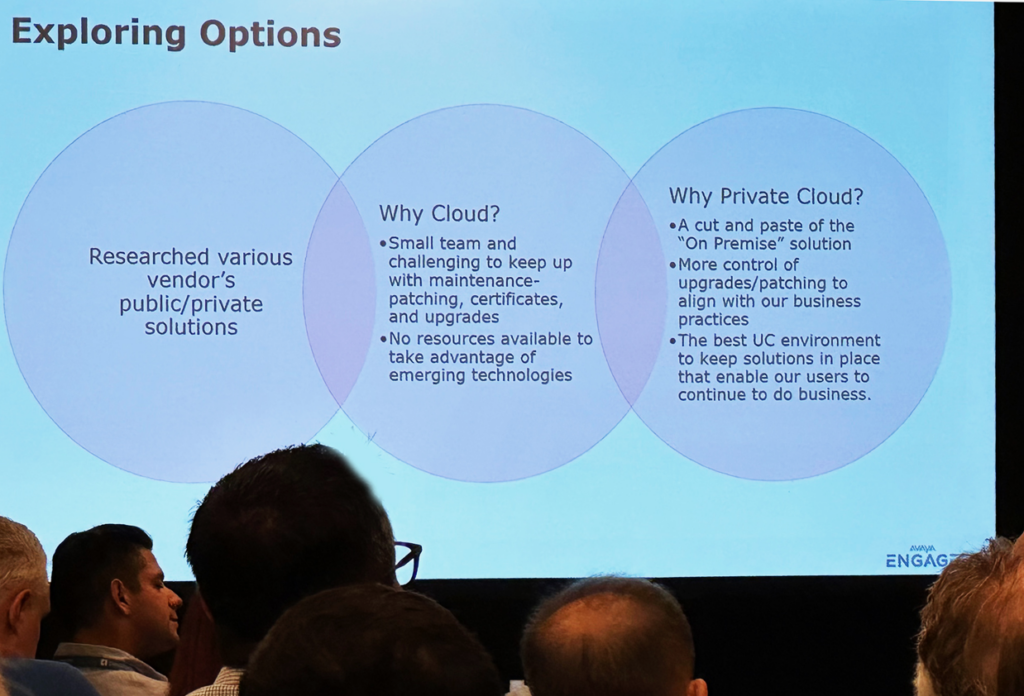By Jayne Hogle and Anne Marie Oliver, American Heart Association
This is a time when many organizations are wrestling with the many issues involved in moving some or all of their communications infrastructure to the cloud. For the American Heart Association (AHA) making the move has resulted in some important benefits – after overcoming just a few challenges!
At Avaya ENGAGE, we presented “Our Journey to the Cloud” to share some of the things we learned along the way. As longtime IAUG members, we recognized the valuable benefits of peer-to-peer communications.
To set the stage, the AHA is nonprofit organization with multiple regions to stay close to local communities. We have a small team of three people who support 149 gateways, plus our headquarters facility. As a result, we found ourselves spending all our time on maintenance issues, including certificate that come on and off at different times.
Before we could make our move to Avaya private enterprise cloud with Microsoft Azure, we spent two years talking with multiple vendors about our options. We wanted security, responsiveness and flexibility with the least amount of disruption. Because we already had an Avaya Cloud Office setup in our Alaska office, we were able to get an early look at what the journey to the cloud might entail.
One thing we learned right away was that a public cloud option would not work for use. Our communications systems need to be up 24/7 since many people call us to ask if they are having a heart attack or stroke. So for us, picking up our on-prem Avaya solutions and moving them to Azure was a natural choice.

Lessons from the migration
Because moving to the cloud is usually not the cheapest strategy, we paid a great deal of attention to the financials. Controlling costs was a particularly important aspect of the planning process, including getting approval from senior leadership.
One step was bringing down our analog lines, as those costs had jumped substantially over time. In fact, some of the last ones were costing more than $1,000 a month. We also asked the business units about getting rid of their fax lines: how many faxes did they get or send in the past few months, and could those documents be scanned instead? These steps allowed us to redirect those funds.
We also were able to show the financial benefits of moving several contact center applications, such as announcements and advanced call routing, to the cloud. We also worked closely with other departments to show the business use cases of moving to the cloud.
After evaluating our current environment, we began reducing the analog lines and the gateways, and converting the phones to SIP on a site-by-site basis. When changing out your phones, you have to do your homework, as some of the old TLS (transport layer security) might not work in the new platform. You also need to be sure your E911 system will work in the cloud.
One of the big challenges was that our telco could not support the cloud, so we had to migrate all our DIDs. We were able to move 12,000 lines in several weeks, but we had to push the telco. So, be sure you have conversations upfront with your telco before you move into production.
As a longtime Avaya customer, we already had good relationships with their project team. That gave us a great deal of comfort on our journey to the cloud. Today, we are 100 percent in the cloud and are very happy with our decision.
Jayne Hogle is director of unified communications and Anne-Marie Oliver is unified communications telecom analyst at the American Heart Association.
